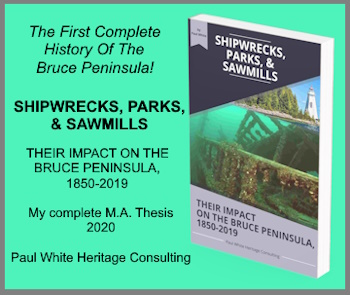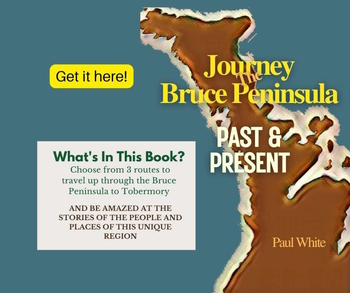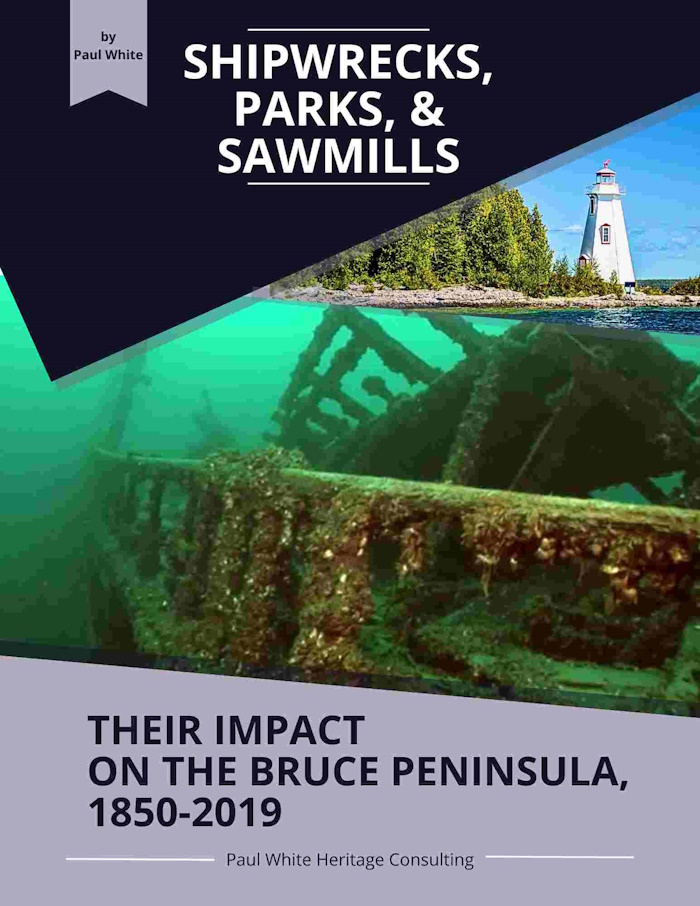Paris Ontario: Who Knew...
Paris Ontario: Who knew this community had such a unique origin and how the local citizens used that history to protect the environment of their region.
This is a story about how history can be used to challenge modern issues. Although this column has traditionally been dedicated to historical information about the Grey and Bruce region, today I am going to take you on a voyage to Paris. But before you jump for your passport and your French-English dictionary, get your car keys because we are going to Paris, Ontario.
Why is a local historian in Owen Sound writing about Paris, Ont.? The reason is quite simple: Plaster of Paris!
In the early 1990s, a gravel company was going to start operations on a farm near the Grand River, just south of Paris. A number of concerned citizens questioned the environmental and historical impact of such a venture. A committee was formed to examine both the environmental and historical implications of the creation of a gravel pit. A presentation to the Ontario Municipal Board resulted in some success for the group. Although the gravel company was allowed to operate, a 200-metre buffer zone between the pit and the shores of the Grand River was ordered.
Buoyed by this significant success, the citizens group became the Grand River Heritage Mines Society in August 1993. The mandate of the group was to locate, record and preserve artifacts concerning the history and heritage of the gypsum mining industry in the Grand River Watershed.
Paris Ontario: Origins
Paris Ontario came into being because of the presence of large quantities of gypsum in the area. The first gypsum was discovered in the area by surveyor Augustus Jones in 1793. In 1822, William Holme started what was probably the first gypsum mine in Ontario at that site. A year later, Holme added a gypsum mill, but shortly thereafter sold his 400-hectare (1,000-acre) estate and all his mining ventures to Hiram Capron.
Capron, using the estate as a base, laid out the plots for the town of Paris, Ontario.
Acknowledging the impact of gypsum in the creation of the town, the original settlers were influenced by the fact that Paris, France also had major gypsum mines. Recognizing this and perhaps hoping for growth and prosperity similar to that major European metropolitan centre, they named their settlement Paris.
Under Capron's ownership, the mine expanded not only to meet the traditional needs for gypsum products throughout the province of Ontario, but also to farmers who used the chopped-up gypsum as fertilizer, or, as it was known, "land plaster."
As more deposits were discovered in the area and market demand increased, other mines and quarries were created. The original Paris Plaster had 15 tunnels and continued in operation until 1905 under the ownership of the Alasbastine Company of Paris. Today only two or three gypsum mining operations in the area continue to function.
The Grand River Heritage Mines Society is a wonderful example of a group of citizens used the history of their region to confront a modern problem. From their original activism has grown a vibrant group committed to the further exploration of the past and an appreciation for the efforts of the pioneers who created the economic base from which the town of Paris, Ontario grew.
Interestingly, this group has an indirect Owen Sound connection. One of-the group's founders, Jean Farquharson, taught at the OSCVI in the 1950s and was a high school student of West Hill's first principal, Gordon Bailey, when he taught English in Woodstock, Ontario.
History Pages
Baseball History in Southwestern Ontario is rich, and surprisingly longer than one might expect, actually setting historical precedents!
Census Takers in 1891 Canada faced difficult obstacles to gather the necessary information but the results were revealing then, and today.
The Glorious Twelfth: A Tradition from Across the Pond which served to both unite and divide pioneer communities.
Maple Syrup: A Pioneer Necessity and a trading commodity for indigenous peoples is now a Sunday morning breakfast treat with pancakes!
Paris Ontario: Who Knew this community had such a unique origin and how the local citizens used that history to protect the environment of their region?
Pioneer Christmas: A Family Tradition as told to me by may grandparents who experienced Christmas as children in the 1880s and 1890s.
"Thank You to a Veteran" - should be something everyone of us should think, and especially say, every day!
From Lochnaw to Manitoulin - A Review this book details through a soldier's diary a trip from Penetanguishene to Manitoulin Island in 1839.
Baseball History in southwestern Ontario has very early beginnings and the dominance of Canadian teams in early competition may be surprising to many readers.
History Pages introduces the readers to interesting people, places, and events that I have researched and written about in my writing career that spans more than three decades.





